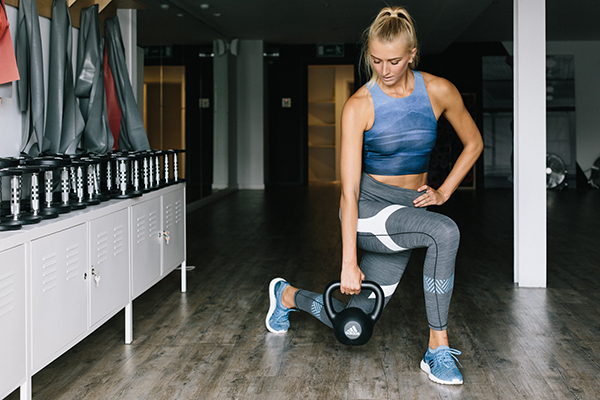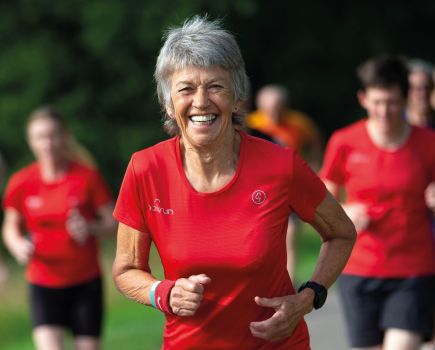Music can be as essential to your workout as wearing the right trainers and sports apparel.
A good playlist can definitely enhance your performance. Personal trainer and fitness enthusiast Zanna van Dijk has teamed up with Costas Karageorghis, a professor in sport and exercise psychology at Brunel University London, to define exactly what makes the perfect playlist.
Professor Costas, author of Applying Music in Exercise and Sport, has devoted his career to researching the effects of music in sport and exercise, and how a carefully curated playlist can positively affect performance.

Fitness blogger Zanna van Dijk
‘Generally most people enjoy working out with music but do not harness its full potential as a distracting and motivating stimulus. It was great to be able to show a regular gym-goer, like Zanna, the ways in which she can use music to give her workouts a boost. By learning about her preferences and personal associations, I was able to create a bespoke playlist that includes songs that conjure positive imagery and affirmations. Such songs are particularly important for when a workout really begins to hurt.’
Here are Professor Costas’s 11 top tips on how to create the ultimate performance-enhancing playlist…
- The music should have an appropriate beat, with a pulse strong enough to tap your feet to. This will help you synchronise and get ‘into’ the music more easily.
- Avoid music with long rhythmic lulls (e.g. Rumour Has It by Adele), unless planning to use the lulls to punctuate recovery during your exercise routine (i.e. using them for respite).
- Bear in mind that the harder the workout, the faster and more intense your music should be (e.g. 125–140bpm for a high-intensity workout). The highest tempo (i.e., the speed of the music) should be used at the point in your workout when you are exercising most intensely, essentially when you’re breathing heavily and your muscles are burning.
- Early on, include tracks that embody who you are and make you feel strong and empowered. This is particularly important if you struggle to get motivated to exercise.
- Avoid music with an offbeat rhythm if you are trying to coordinate your movements. For example, Latin music such as salsa or very complex electronic dance music won’t not make those burpees any easier!
- If core strength is a key part of your workout, consider music with appropriate affirmations in the lyrics to keep you going – try Stronger by Clean Bandit.
- On a similar note, look for tracks with lyrics that mean something to you. This can help elevate your mood and, by extension, the quality of your workout.
- If you know you don’t like a particular part of a workout, put on the most positive, upbeat tune on your playlist and allow it to carry you through.
- Try for the most part to select music with major (happy) harmonies music vs. minor (sad) harmonies to promote a positive mindset during your workout. A good example of a “happy” track would be Happy by Pharrell Williams and similarly, for a “sad” track, Jar Of Hearts by Christina Perri.
- To increase workout intensity over time, slowly ramp-up the music tempo and intensity. Do the opposite towards the end of your workout when you’re heading towards the cooldown phase.
- Change your playlist if and when it stops having such a motivating effect and if it no longer matches your exercise routine.
The Libratone x Zanna van Dijk playlist, created by Professor Costas, is available to download on Spotify. Zanna listens to her tracks with the Libratone TRACK+ (£169)







